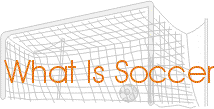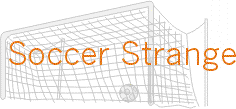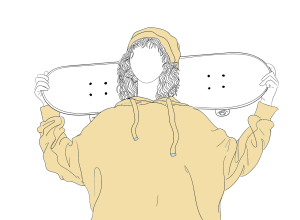
“In the land of the blind, the one-eyed man is king,
Johan Cruyff
but he still only has one eye.”2
While that sounds like a simple question a quick look at many practice fields reveals a bewildering answer. Many practices find children facing situations that they never see in an actual match. This should lead a coach to evaluate the practice by first asking, “Is it soccer?”
Soccer is a game. The children are involved in an activity that pits them against an opponent. It is, in most cases, about winning and losing, competition and cooperation. It is also a leisure activity. The children are there because they want to be there. They want to play a game.
To play a game of soccer you first need a ball. Then an opponent. Add a field, a couple of goals across from each other, mix in a few soccer rules and you have a game of 1v1. But this is hard work and you can’t play it for very long. So you get some teammates, and to keep it fair, a few more opponents. With these elements, you can play soccer all day.
These are the elements of soccer. They make the game what it is. If you remove a key element such as the ball or opponent it can’t be soccer. Likewise, to change an element too much you can move too far from the game. Playing with two balls or three teams might be fun and a game, but is it soccer? To pass a ball across a grid and run to a corner involves kicking techniques, but is it soccer?
Soccer also involves the element “chaos.” The opponents, teammates, and the ball are all moving in different directions. Players, parents, and coaches are shouting different instructions and information. Bringing “order out of chaos” is an important skill in learning how to play the game.
Soccer is a game with certain elements. There must be a ball, teammates and opponents, afield with boundaries, goals opposite each other, and soccer rules.
Soccer like
“Being able to recognize constantly recurring situations…
is an important precondition for taking the correct action
and applying the required technical skill.”
Playing with the elements is an integral part of the Dutch Vision. Adjusting the field, goals, number of players and rules is essential to the learning process. But how far can the adjustments be made before the game is no longer soccer? A look at two examples in sports will help.
Half-court basketball requires all of the techniques of basketball. Players must solve real basketball problems against opponents in a game. It is a valuable tool for the development of their basketball TIC. But, half-court basketball misses one important element, direction. Without having to defend a basket at the opposite end of the court it falls short of being basketball, it is basketball-like.
Indoor soccer (with walls) is the second example. With the goals at each end, direction is involved. However, the walls dramatically change the boundaries. A ball played against them does not go out of play, therefore going to the opponents. In comparison to real soccer, there are no boundaries. Still, indoor soccer can be a valuable tool. However, it should not be confused with soccer because the walls offer solutions to problems that will not be found in a real game. It is soccer-like.
A soccer-like practice involves solving a real soccer problem with TIC. It involves competition where both teams face the possibility of winning or losing. While some of the elements of the game are missing or altered the basic picture retains a realistic moment.
It can be a valuable aid to coaching a small piece of the game. A soccer-like practice can be viewed as a close-up of a larger picture. While the bulk of practice should be spent playing soccer, a soccer-like session can be useful in addressing specific problems.

One way that a coach can check the effectiveness of a practice is to ask, “What is being learned?” The answer should incorporate all three elements of TIC being used to solve a real soccer problem. Do the children have to utilize techniques to overcome obstacles? Is insight required, do they have to read situations and make decisions? Is a joint effort needed, do they need to work together to solve the problem?
- Technique. Are the techniques used in match-like situations? Are they relevant to the soccer problem?
- Insight. Do the players understand the problem? How do they solve it? Can the solution be improved?
- Communication. Do the players work well together? Are they in agreement about the plan? Is their timing good?
A practice should address a soccer problem and a soccer problem is about a shortcoming in TIC. When a practice is devoted solely to one element of TIC, such as technique, it loses relevance to the game. In fact, when it is moved far enough it becomes soccer strange. When all three elements are present, and there is a real soccer problem, real learning can take place.
One tenet of the Dutch Vision is that children do not spend a lot of time playing soccer. For a large number, the amount can be measured by the time spent at practice. When a significant percentage of practice time is spent running laps, standing in lines, listening to the coach’s lecture, or running in prescribed patterns, that time is lost to learning soccer. Soccer strange activities can be left to highly motivated players who invest considerable time and have mastered the basics of the game. For the majority of children playing soccer, this is not the case. Their time would be better spent learning soccer by playing soccer.
Soccer strange activities can be a useful part of soccer camps where children spend several hours playing. Their ability to concentrate can be rested during these breaks as they practice “mindless” tasks. They can also be a part of their homework and active rest activities.
Please note that this website is an archived resource and is intended for informational purposes only. The content, including advice, strategies, and tips, is provided as-is from the date of the last update and may not reflect the most current practices or developments in the field. We do not update or maintain the information post-archival. Users are advised to use this site as a historical reference and should consult current resources for the latest information in this area.
